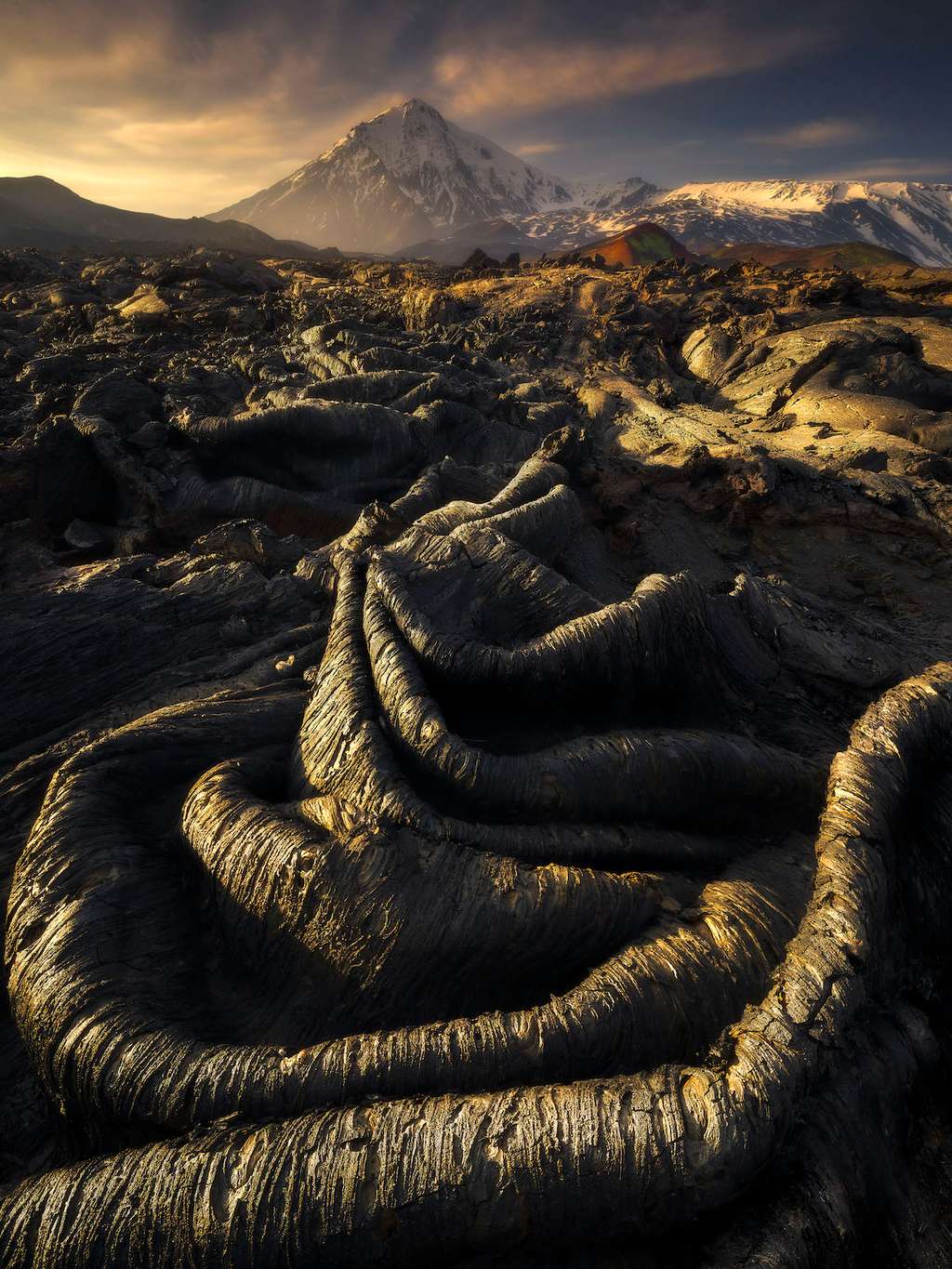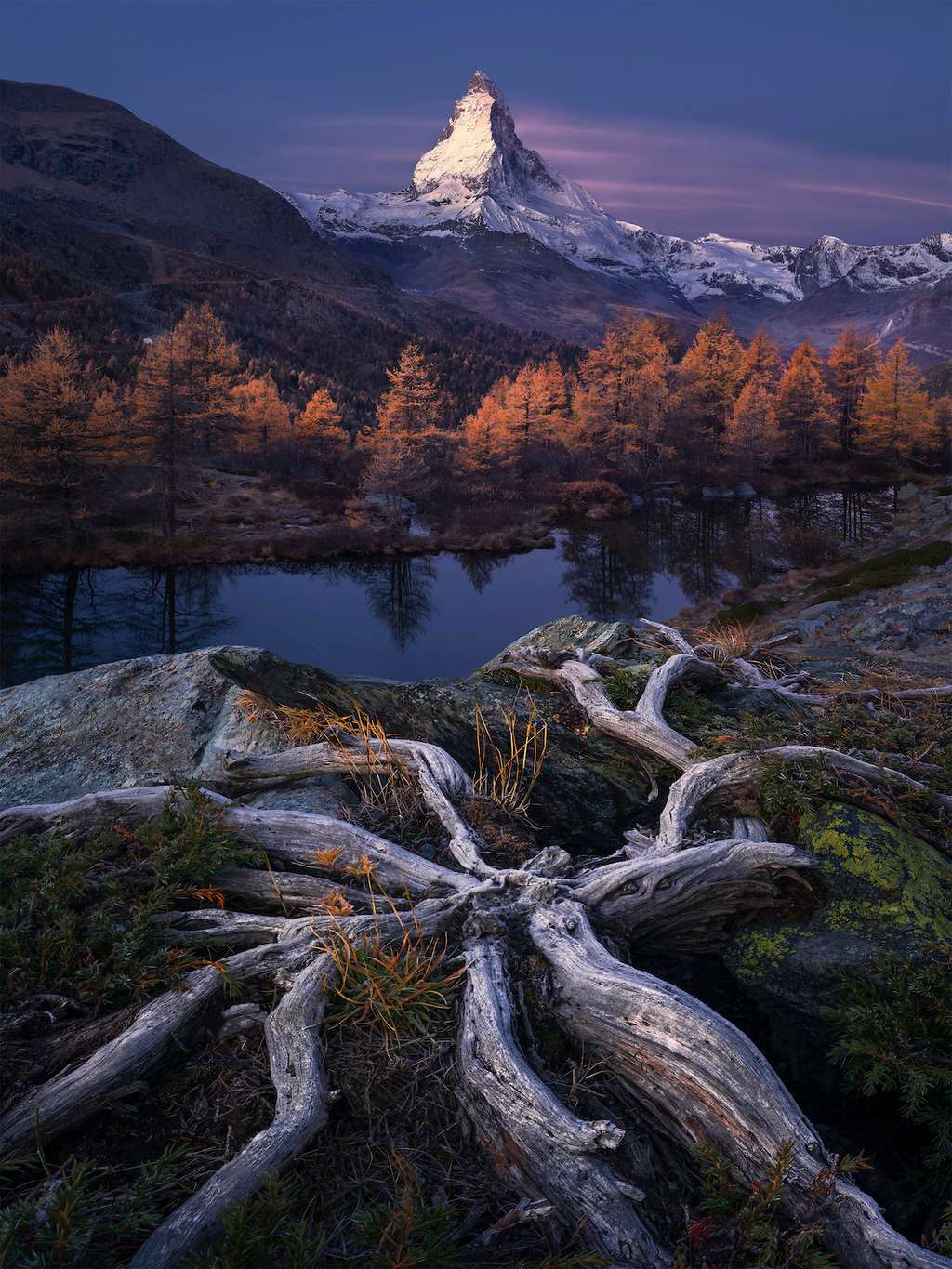Le bonheur c'est se consacrer à des activités désintéressées et s'attacher, en toute sérénité, à autre chose que soi-même.
28-02-2023JoanMira
Le bonheur c'est se consacrer à des activités désintéressées et s'attacher, en toute sérénité, à autre chose que soi-même.
28-02-2023


2023 February 11
Explanation: The two prominent clouds in this Chilean Atacama Desert skyscape captured on January 21 actually lie beyond our Milky Way galaxy. Known as the Large and the Small Magellanic Clouds they are so named for the 16th century Portuguese explorer Ferdinand Magellan, leader of the first circumnavigation of planet Earth. Famous jewels of southern hemisphere skies, they are the brightest satellite galaxies of the Milky Way. The larger cloud is some 160,000 light-years, and the smaller 210,000 light-years distant. While both are irregular dwarf galaxies in their own right, they exhibit central barred structures in the deep wide-angle view. Wide and deep exposures also reveal faint dusty galactic cirrus nebulae and the imprints of gravitational tidal interactions between the Large and Small Magellanic Clouds.
2023 February 10
Explanation: Fading as it races across planet Earth's northern skies comet C/2022 E3 (ZTF) shares this telescopic frame with comet C/2022 U2 (ATLAS). Captured on the night of February 6 from a garden observatory in Germany's Bavarian Forest, the starry field of view toward the constellation Auriga spans about 2.5 degrees. Discovered by sky survey projects in 2022 (the Zwicky Transient Facility and the Asteroid Terrestrial-impact Last Alert System) these long-period comets are outbound, reaching perihelion just last month. The much fainter comet ATLAS made its closest approach to our fair planet on January 29 at a distance of about 4.6 light-minutes, compared to a mere 2.4 light-minutes for comet ZTF on February 2. This comet ATLAS lacks the well-developed tails of the formerly naked-eye comet ZTF. But both comets sport greenish tinted comas, emission from diatomic carbon molecules fluorescing in sunlight. Continuing its dash across planet Earth's sky, the good-binocular comet ZTF will appear close to bright planet Mars tonight.
 i
i2023 February 9
Explanation: Vivid and lustrous, wafting iridescent waves of color wash across this skyscape from Kilpisjärvi, Finland. Known as nacreous clouds or mother-of-pearl clouds, they are rare. But their unforgettable appearance was captured looking south at 69 degrees north latitude at sunset on January 24. A type of polar stratospheric cloud, they form when unusually cold temperatures in the usually cloudless lower stratosphere form ice crystals. Still sunlit at altitudes of around 15 to 25 kilometers, the clouds can diffract sunlight even after sunset and just before the dawn.


Crédit photo : Shutterstock – Veronika Kovalenko

Crédit Photo : Shutterstock – Natoe
2023 February 6
Explanation: In the heart of the Rosette Nebula lies a bright cluster of stars that lights up the nebula. The stars of NGC 2244 formed from the surrounding gas only a few million years ago. The featured image taken in mid-January using multiple exposures and very specific colors of Sulfur (shaded red), Hydrogen (green), and Oxygen (blue), captures the central region in tremendous detail. A hot wind of particles streams away from the cluster stars and contributes to an already complex menagerie of gas and dust filaments while slowly evacuating the cluster center. The Rosette Nebula's center measures about 50 light-years across, lies about 5,200 light-years away, and is visible with binoculars towards the constellation of the Unicorn (Monoceros).

Explanation: Centered in this colorful cosmic canvas, NGC 2626 is a beautiful, bright, blue reflection nebula in the southern Milky Way. Next to an obscuring dust cloud and surrounded by reddish hydrogen emission from large H II region RCW 27 it lies within a complex of dusty molecular clouds known as the Vela Molecular Ridge. NGC 2626 is itself a cloud of interstellar dust reflecting blue light from the young hot embedded star visible within the nebula. But astronomical explorations reveal many other young stars and associated nebulae in the star-forming region. NGC 2626 is about 3,200 light-years away. At that distance this telescopic field of view would span about 30 light-years along the Vela Molecular Ridge.
2023 February 3
Explanation: Stars trace concentric arcs around the North Celestial Pole in this three hour long night sky composite, recorded with a digital camera fixed to a tripod on January 31, near Àger, Lleida, Spain. On that date Comet C/2022 E3 (ZTF) was near its northernmost declination in planet Earth's sky. That put the comet about 10 degrees from Earth's North Celestial Pole making the comet's position circumpolar, always above the horizon, from all locations on planet Earth at more than 10 degrees northern latitude. In the startrail image, the extension of Earth's axis of rotation into space is at the left. North star Polaris traces the short, bright, concentric arc less than a degree from the North Celestial Pole. The trail of Comet ZTF is indicated at the right, its apparent motion mostly reflecting Earth's rotation like the stars. But heading for its closest approach to planet Earth on February 1, the comet is also moving significantly with respect to the background stars. The diffuse greenish trail of Comet ZTF is an almost concentric arc mingled with startrails as it sweeps through the long-necked constellation Camelopardalis.


2023 February 2
Explanation: The 1970s are sometimes ignored by astronomers, like this beautiful grouping of reflection nebulae in Orion - NGC 1977, NGC 1975, and NGC 1973 - usually overlooked in favor of the substantial glow from the nearby stellar nursery better known as the Orion Nebula. Found along Orion's sword just north of the bright Orion Nebula complex, these reflection nebulae are also associated with Orion's giant molecular cloud about 1,500 light-years away, but are dominated by the characteristic blue color of interstellar dust reflecting light from hot young stars. In this sharp color image a portion of the Orion Nebula appears along the bottom border with the cluster of reflection nebulae at picture center. NGC 1977 stretches across the field just below center, separated from NGC 1973 (above right) and NGC 1975 (above left) by dark regions laced with faint red emission from hydrogen atoms. Taken together, the dark regions suggest the region's popular moniker, the Running Man Nebula. At the estimated distance of Orion's dusty molecular cloud this running man would be about 15 light-years across.

Foto: Eelco Böhtlingk on Unsplash
2023 February 1
Explanation: Seven worlds orbit the ultracool dwarf star TRAPPIST-1. A mere 40 light-years away, many of the exoplanets were discovered in 2016 using the Transiting Planets and Planetesimals Small Telescope (TRAPPIST) located in the Atlas Mountains of Morocco, and later confirmed with telescope including NASA's Spitzer Space Telescope. The TRAPPIST-1 planets are likely all rocky and similar in size to Earth, and so compose one of the largest treasure troves of terrestrial planets ever detected around a single star. Because they orbit very close to their faint, tiny star they could also have regions where surface temperatures allow for the presence of ice or even liquid water, a key ingredient for life. Their tantalizing proximity to Earth makes them prime candidates for future telescopic explorations of the atmospheres of potentially habitable planets. All seven exoplanets appear in the featured illustration, which imagines a view from the most distant known world of this system, TRAPPIST-1h, as having a rocky landscape covered in ice. Meanwhile, in the imagined background, one of the system's inner planets crosses in front of the dim, orange, nearly Jupiter-sized parent star.
Ouverte en 1908, Union Station est la principale gare de Washington DC, aux États-Unis. Abîmée, le toit effondré, elle a été refaite à neuf...
